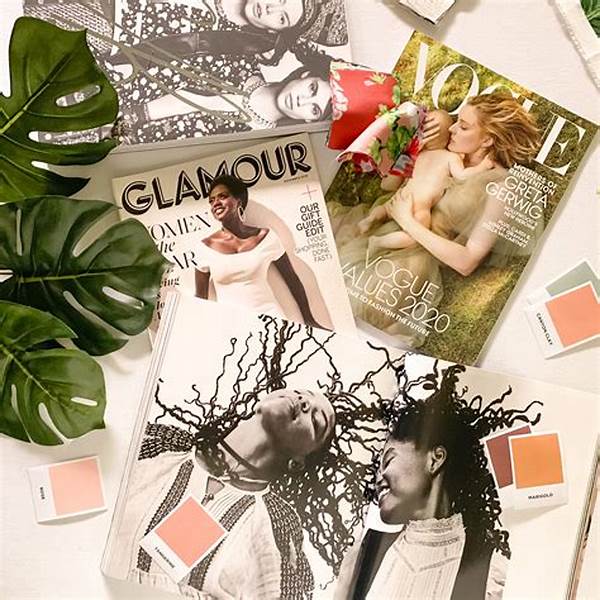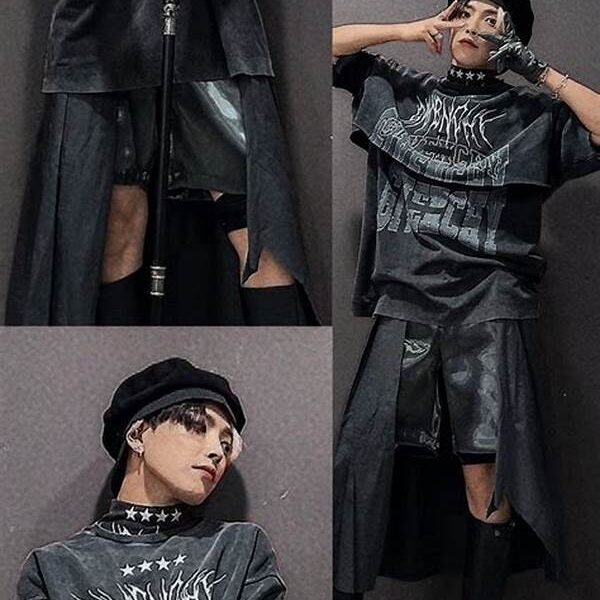Hey there, fashionistas! Ever wondered how your favorite designers and brands seem to predict what’s going to be “in” for the next season? It’s all thanks to fashion trend forecasting techniques! These savvy methods help fashion houses stay ahead of the curve, ensuring that their collections are exactly what people want to wear. Whether you’re a budding designer or just love to stay stylish, understanding these techniques can give you a leg up in the fashion game. So, let’s dive into the world of fashion trend forecasting techniques and see what makes them tick.
Read Now : Idol-inspired Uniform Looks
Understanding Fashion Trend Forecasting
At its core, fashion trend forecasting is all about predicting what will be popular in the coming months or years. This includes colors, fabrics, textures, styles, and even accessories. The process involves analyzing data, as well as observing cultural and social influences. Think of it as a mix of art and science, with a dash of intuition! Fashion trend forecasting techniques have evolved significantly over the years, blending traditional methods with modern technology. Trend forecasters might look at runway shows, street style, pop culture, and even global events to gather insights. They also pay attention to consumer behavior, using data analytics to understand shopping patterns. By piecing together all these elements, they craft predictions that guide designers, retailers, and even influencers in shaping the future of fashion.
Fashion trend forecasting techniques are essential for several reasons. For one, they help the industry reduce waste by producing more of what’s likely to sell. Moreover, they enable brands to connect more deeply with their audience by offering products that reflect current moods and desires. In an ever-changing fashion landscape, staying relevant is key. Companies that harness these techniques effectively can set trends rather than just follow them. As a result, they not only boost their image and sales but also contribute to the dynamic evolution of fashion itself.
Techniques for Spotting Fashion Trends
1. Analyzing Runway Shows: Fashion trend forecasting techniques often start with observing runway collections. These shows offer insights into upcoming colors, styles, and themes.
2. Monitoring Street Style: Keeping an eye on real people and their everyday outfits provides valuable data for predicting trends in fashion trend forecasting techniques.
3. Cultural Analysis: Understanding societal shifts and global events can influence fashion trends. Savvy forecasters incorporate these elements into their techniques.
4. Data Analytics: Modern fashion trend forecasting techniques leverage big data to analyze consumer behavior and market trends.
5. Collaborating with Influencers: Working closely with influencers helps brands tap into new and emerging trends, making fashion trend forecasting techniques more accurate.
Historical Context and Evolution
Fashion trend forecasting has a rich history, evolving alongside the fashion industry itself. Decades ago, trend forecasting was largely intuitive, relying on the keen eyes of experienced fashion experts. They attended runway shows, chatted with designers, and immersed themselves in the cultural zeitgeist to make predictions. These days, fashion trend forecasting techniques have become more sophisticated. The integration of technology has been a game-changer in the field. With access to data analytics, AI, and machine learning, forecasters can now predict trends with greater accuracy than ever before. Despite the advancements, human intuition remains at the heart of successful trend forecasting. After all, fashion is an art form deeply rooted in emotion and creativity.
The journey from instinctual predictions to data-driven insights exemplifies the dynamic nature of fashion trend forecasting techniques. Yet, some things never change—like the excitement of discovering the next big trend before it hits the mainstream. For both seasoned professionals and fashion enthusiasts alike, predictions offer a window into the fashion world’s future. As technology continues to advance, the role of trend forecasting will undoubtedly grow, making it an indispensable part of the industry.
The Role of Social Media
Social media plays a pivotal role in modern fashion trend forecasting techniques. Platforms like Instagram and TikTok serve as real-time indicators of what’s trending. Trend forecasters monitor hashtags, viral videos, and influencers’ content to gauge what’s hot. Social media’s immediacy allows for quick adjustments and agile forecasting. With millions of users constantly sharing their style preferences, social media provides an extensive and immediate pool of data. Fashion brands leverage this information to refine their collections and marketing strategies.
Read Now : Vibrant Korean Street Style Outfits
Engagement metrics, such as likes, shares, and comments, are crucial indicators for trend forecasting. Additionally, the global reach of social media means trends can quickly spread across continents, making it a vital tool for fashion trend forecasting techniques. The ability to witness and analyze these trends in real-time has transformed how the industry predicts and adapts to shifts in fashion, enabling faster and more accurate forecasts.
Challenges in Fashion Trend Forecasting
Despite its importance, fashion trend forecasting techniques come with challenges. One major hurdle is the unpredictability of consumer preferences. While data offers insights, human tastes can be fickle and influenced by many unforeseen factors. Another challenge is the rapid pace of fashion. With new trends emerging almost every week, it can be tough to keep up. Plus, overreliance on data can sometimes stifle creativity, as brands may stick too closely to predictions and miss out on unique, out-of-the-box ideas.
Navigating these challenges requires a delicate balance between data-driven decisions and creative intuition. Successful forecasters must remain adaptable, continuously updating their methods and embracing innovation. As the fashion landscape evolves, the ability to forecast trends accurately becomes an art form in itself. Embracing both traditional insights and cutting-edge technology is key to conquering these challenges in the dynamic world of fashion trend forecasting techniques.
The Future of Fashion Trend Forecasting
As we look to the future, fashion trend forecasting techniques will only continue to evolve. With technological advancements, artificial intelligence and machine learning will likely play an even larger role, offering predictive insights that are currently beyond our reach. Imagine algorithms that can predict personal style changes or virtual reality experiences that allow designers to envision new trends before they’re even conceptualized.
Sustainability will also be a driving force in shaping these techniques. As the fashion industry becomes more eco-conscious, forecasting methods will need to adapt, focusing on longevity and ethical practices. The importance of diversity and inclusion will inevitably influence the kinds of trends that emerge, fostering a more representative and equitable fashion landscape. Whatever the future holds, one thing is certain: fashion trend forecasting techniques will remain an integral part of the industry’s enduring quest for what’s next.
Summary of Fashion Trend Forecasting
In essence, fashion trend forecasting techniques are the backbone of the fashion industry’s forward momentum. They serve as a bridge between the present and the future, enabling brands to create collections that resonate with consumers’ desires and aspirations. By incorporating a combination of observational insights, data analysis, and cultural understanding, these techniques help shape the fashion world as we know it.
Despite the challenges, the role of trend forecasting is fundamentally exciting and transformative. It ensures the constant evolution of fashion, keeping it vibrant and reflective of our ever-changing world. For budding designers and industry veterans alike, mastering these techniques is not just about keeping up with trends—it’s about setting them, too. So, next time you marvel at a new collection, remember the intricate fashion trend forecasting techniques that brought those designs to life.


